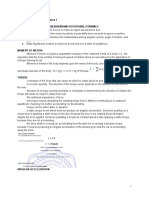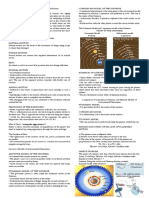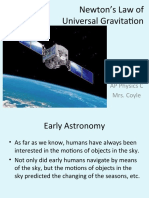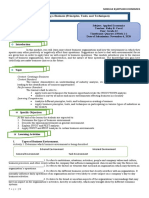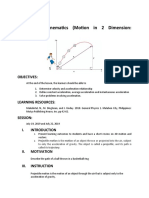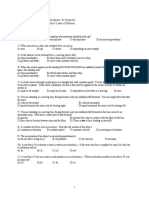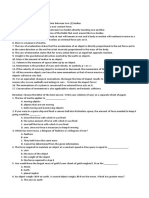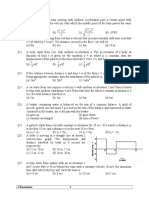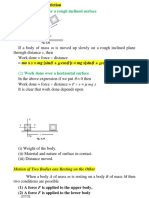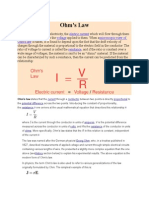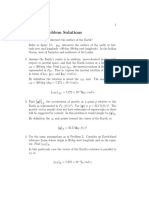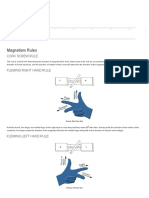0% found this document useful (0 votes)
97 views2 pagesGeneral Physics 1. Module: Kepler'S 3 Laws of Planetary Motion
This document summarizes key concepts in general physics 1 including:
1) Gravity and gravitational force are natural forces that cause objects to be attracted to each other, proportional to their masses and inversely proportional to the distance between them.
2) Kepler's 3 Laws of Planetary Motion describe the elliptical orbits of planets around the sun and relationships between their orbital periods and distances.
3) The Doppler Effect occurs when the observed frequency of a wave (sound or light) is different than the emitted frequency due to relative motion between the observer and source. The Doppler Shift formulae calculate this change in frequency.
Uploaded by
Ruby CocalCopyright
© © All Rights Reserved
We take content rights seriously. If you suspect this is your content, claim it here.
Available Formats
Download as DOCX, PDF, TXT or read online on Scribd
0% found this document useful (0 votes)
97 views2 pagesGeneral Physics 1. Module: Kepler'S 3 Laws of Planetary Motion
This document summarizes key concepts in general physics 1 including:
1) Gravity and gravitational force are natural forces that cause objects to be attracted to each other, proportional to their masses and inversely proportional to the distance between them.
2) Kepler's 3 Laws of Planetary Motion describe the elliptical orbits of planets around the sun and relationships between their orbital periods and distances.
3) The Doppler Effect occurs when the observed frequency of a wave (sound or light) is different than the emitted frequency due to relative motion between the observer and source. The Doppler Shift formulae calculate this change in frequency.
Uploaded by
Ruby CocalCopyright
© © All Rights Reserved
We take content rights seriously. If you suspect this is your content, claim it here.
Available Formats
Download as DOCX, PDF, TXT or read online on Scribd
/ 2




























